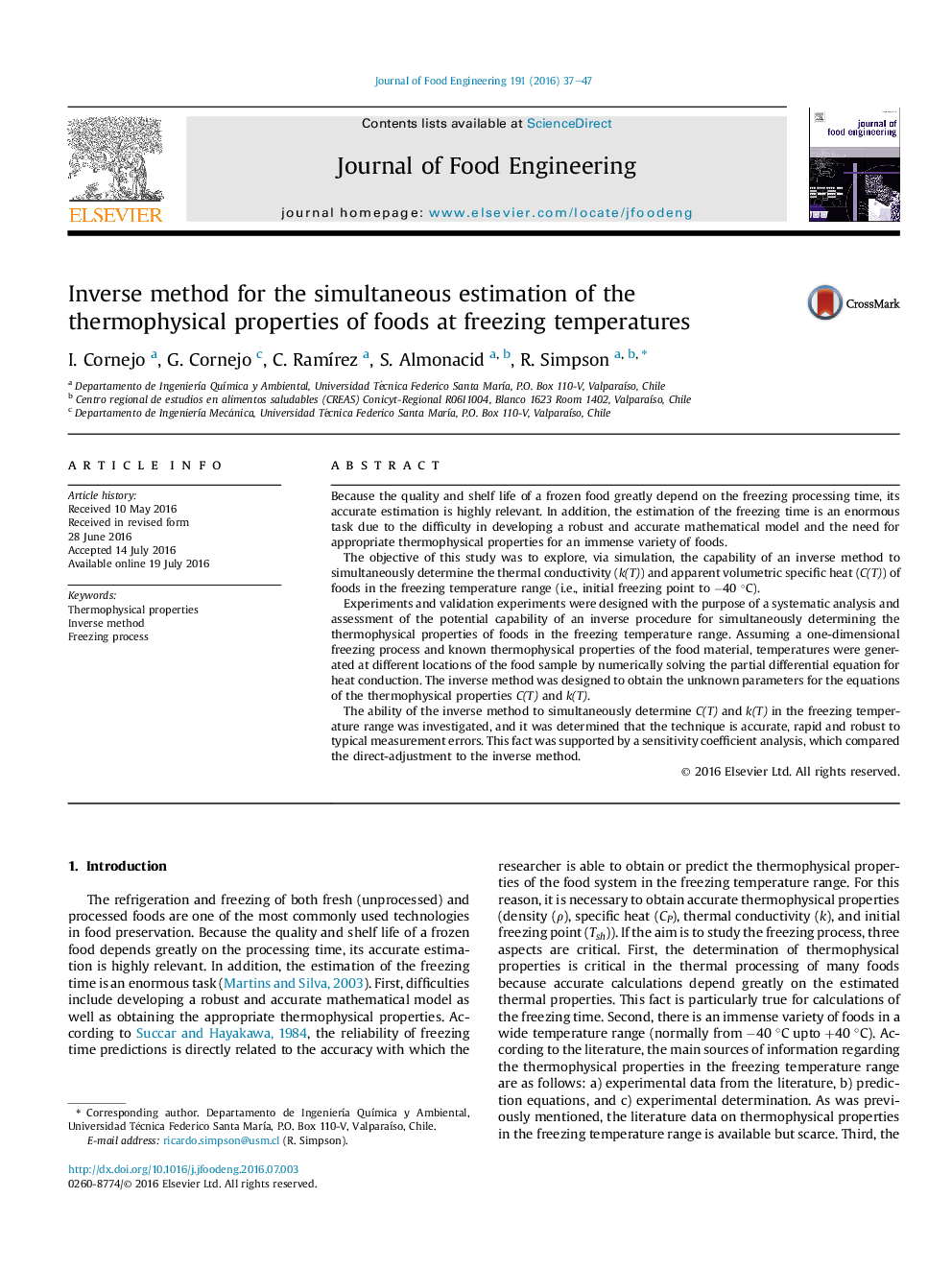| Article ID | Journal | Published Year | Pages | File Type |
|---|---|---|---|---|
| 222549 | Journal of Food Engineering | 2016 | 11 Pages |
•Determination of thermal properties of foods under freezing conditions is difficult.•Inverse methods (IM) have wide applications but are rarely used in food engineering.•With IM food properties at freezing conditions can be found with simple experiments.•Specific heat and thermal conductivity were simultaneously found in freezing range.
Because the quality and shelf life of a frozen food greatly depend on the freezing processing time, its accurate estimation is highly relevant. In addition, the estimation of the freezing time is an enormous task due to the difficulty in developing a robust and accurate mathematical model and the need for appropriate thermophysical properties for an immense variety of foods.The objective of this study was to explore, via simulation, the capability of an inverse method to simultaneously determine the thermal conductivity (k(T)) and apparent volumetric specific heat (C(T)) of foods in the freezing temperature range (i.e., initial freezing point to −40 °C).Experiments and validation experiments were designed with the purpose of a systematic analysis and assessment of the potential capability of an inverse procedure for simultaneously determining the thermophysical properties of foods in the freezing temperature range. Assuming a one-dimensional freezing process and known thermophysical properties of the food material, temperatures were generated at different locations of the food sample by numerically solving the partial differential equation for heat conduction. The inverse method was designed to obtain the unknown parameters for the equations of the thermophysical properties C(T) and k(T).The ability of the inverse method to simultaneously determine C(T) and k(T) in the freezing temperature range was investigated, and it was determined that the technique is accurate, rapid and robust to typical measurement errors. This fact was supported by a sensitivity coefficient analysis, which compared the direct-adjustment to the inverse method.
